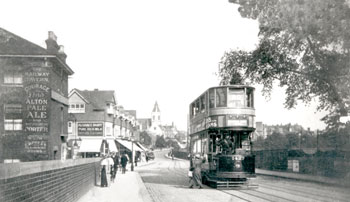History of Catford
The name Catford is usually explained as having been taken from a ford across the River Ravensbourne frequented by wild cats. In 1745 there were a few houses at Catford Bridge, and separate hamlets at Perry Hill and Rushey Green. The open space called Rushey Green, which was east of the modern road, was an ancient area of settlement, with moated houses on either side. The green was enclosed in 1810, and cottages were rapidly built over it.
A watermill for corn was established at Catford Bridge at the beginning of the nineteenth century to serve the local farms. The fields in the area were a mixture of pasture and arable. The first significant planned housing development was the luxury estate called Ravensbourne Park, which was begun in the 1820s.
In 1857 the Mid Kent railway line was built, with a station at Catford Bridge. This encouraged the building of houses for the middle classes, since it offered transport to the City of London.
However, large-scale development did not take place until the end of the century, when trams provided a cheaper means of transport and Catford Station gave a direct link with the West End.
Much housing for the working and lower middle classes quickly resulted. The largest of the new building projects was the Corbett Estate, which stretched into Hither Green. The Forster family, Lewisham's largest landowners, began to develop their farmland in the south of Catford from the 1890s. Some light industry was established in southern Catford.
Lewisham�s local government has had its headquarters in Catford since 1875. The old Board of Works offices were enlarged as the Town Hall in 1900, and other municipal buildings have been added.









